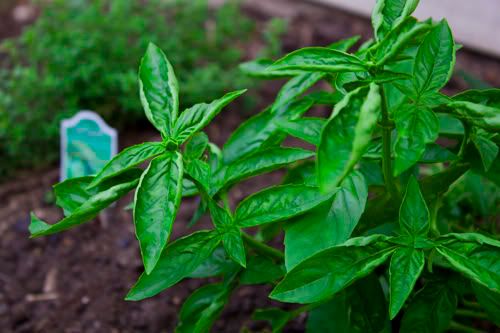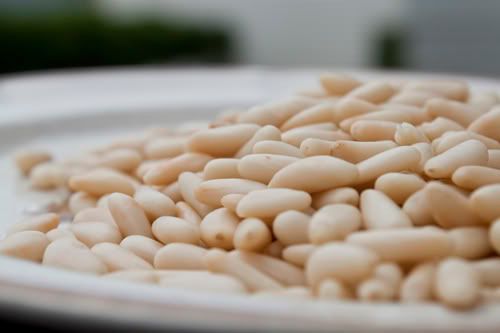Pesto, as we know it, originated around Liguria, Italy. Before the time of blenders, they ground pesto with a mortar and pestle. The word pestle is where pesto found it's name from, meaning to pound or crush. Traditional pesto uses various amounts of basil, pine nuts, cheese, garlic, and olive oil.
While pesto has been a staple in Italy and France for hundreds of years, pesto only became popular in the United States in the 80's. Since then, many variations of the recipe have come to be, replacing basil with other greens such as spinach, parsley, mint; and some not so greens, such as olives, tomatoes and peppers. The pine nuts can be easily replaced with a less expensive nut, such as walnuts.
Pesto can be used as a topping on pretty much anything, such as bread, pasta, meats, or even in soup. And, in case you don't want to spend the time to make your own, most grocery stores sell it in a jar.
Let's discuss some of the ingredients most commonly used in pesto.
The key ingredient to most pesto sauces is basil.

Although basil is a staple in Italian diets, it actually originated in India. There are many different varieties of basil available to plant, the most common being sweet basil (what I plant). Other varieties include Thai basil (which I was given, along with another one I can't name), lemon basil, and holy basil. The variety of flavors in the different plants are also extensive, including lemon, cinnamon, mint, and licorice. The size of the plant depends on the type; sweet basil can grow up to 3 feet.
Basil thrives in full sunlight, but will die quickly once the first frost of the year hits. To keep the leaves flavorful, any flowers that begin to develop must be clipped. When cooking with basil, it is best to leave it until the end of the recipe, as overcooking makes the leaves bitter.
If growing basil isn't an option, it's commonly available in the produce section.

Garlic, unlike basil, comes in one standard variety with lots of different forms. In the produce department, it normally rests by other members of the onion family in bulb form. Garlic cloves are the individual pieces of the garlic once unwrapped from the bulb. (I wish someone had told me that when I started cooking, I thought that a clove was a bulb.)
Besides being available in bulb form, you can also purchase it pre-chopped in jars, pickled, dried, and frozen. The downsides to these alternate formats is the loss in flavor. I've never been able to taste garlic in dishes, but I still feel it's necessary to use the fresh bulbs in meals I make.
A side note about garlic: Don't eat it raw. Jeff tried once, and regretted it.

The most expensive ingredient, pine nuts, come from pine cones, which come from pine trees. Don't go looking around in your back yard for them, however, as they come from specific types of pine trees in the genus pinus. Pine nuts are harvested by hand all over the world, including the U.S., Europe, and Asia. They're commonly used in Italian cooking, as well as in desserts and salads, and can be eaten raw or toasted.
Take caution if you eat pine nuts regularly, as a condition called "pine mouth" can happen. No one is sure why pine mouth occurs, but theories include the nuts coming from certain trees in China. The main symptom is having a bad, metallic taste in your mouth, and it can last anywhere from a few days to a few weeks.
Although cheese and olive oil are important ingredients too, they're worth saving for separate posts in the future.
Sources:
http://en.wikipedia.org/wiki/Pine_nut
http://www.npr.org/blogs/health/2010/07/02/128273771/pinenuts-may-be-to-blame-for-that-bitter-atertaste
http://www.wisegeek.com/what-are-pine-nuts.htm
http://homecooking.about.com/od/cookingfaqs/f/faqpinenuts.htm
http://homecooking.about.com/od/nuts/a/pinenutstips.htm
http://en.wikipedia.org/wiki/Garlic
http://www.extension.umn.edu/distribution/horticulture/m1219.html
http://en.wikipedia.org/wiki/Basil
http://hortchat.com/info/growing-basil
No comments:
Post a Comment